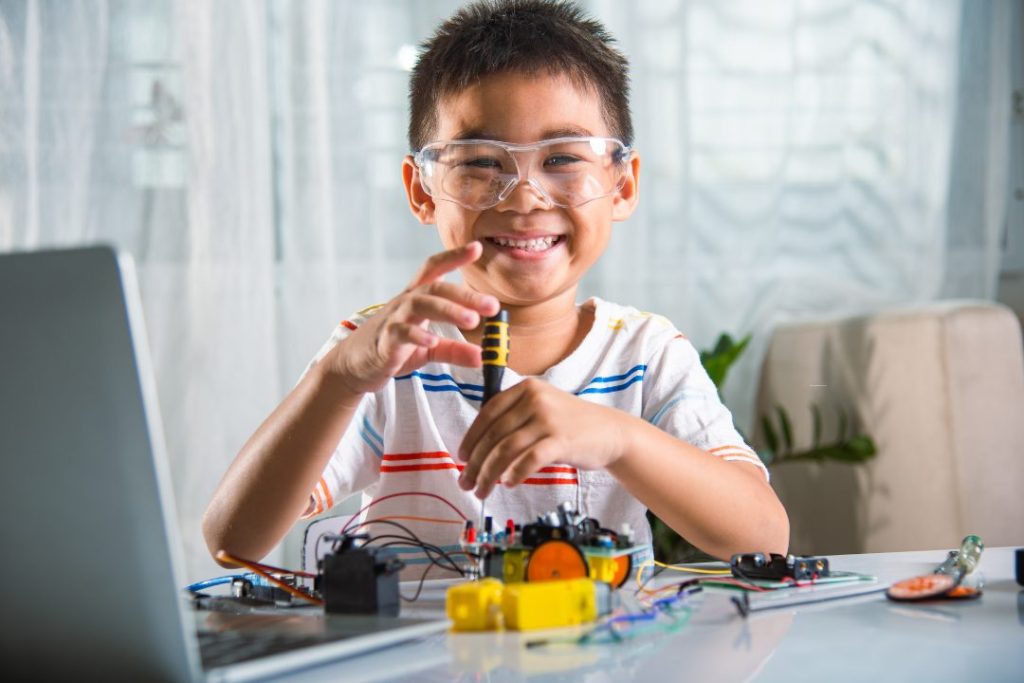
How Robots Are Changing the World: A Kid’s Guide
- Lutful Ahmed
- August 17, 2024
- 7:22 pm
- No Comments
Robots are amazing machines that help us in many ways, from exploring outer space to performing surgeries. They come in all shapes and sizes, and they are changing the world in exciting ways. Let’s explore how robots work, the different types of robots, and how they are used in various fields.
What Are Robots?
Robots are machines designed to perform tasks that are often difficult, dangerous, or repetitive for humans. They can be programmed to follow instructions and often have sensors that help them see, hear, or touch. Robots can move, make decisions, and even learn new things!
Types of Robots
1. Medical Robots
What They Do: Medical robots help doctors perform surgeries with great precision. They can also assist in diagnosing diseases and helping patients recover.
Example: The da Vinci Surgical System is a robot used in hospitals to help surgeons perform delicate operations with tiny instruments. This robot allows for smaller incisions, faster recovery, and less pain for patients.
2. Space Robots
What They Do: Space robots explore planets, moons, and other celestial bodies. They can go where humans cannot, collecting valuable data and sending it back to Earth.
Example: The Mars rovers, like Curiosity and Perseverance, are robots that roam the surface of Mars, taking pictures, analyzing soil, and searching for signs of past life. They help scientists learn more about the Red Planet.
3. Industrial Robots
What They Do: Industrial robots are used in factories to build cars, assemble electronics, and perform other repetitive tasks. They make production faster and more accurate.
Example: Robots on assembly lines in car factories can weld parts together, paint cars, and even assemble engines. These robots work quickly and safely, improving the quality and speed of manufacturing.
4. Exploration Robots
What They Do: These robots help us explore dangerous or hard-to-reach places, such as deep underwater or in hazardous environments.
Example: The ROV (Remotely Operated Vehicle) is a robot used to explore the ocean’s depths. It can dive deep into the ocean to study marine life, shipwrecks, and underwater volcanoes.
5. Service Robots
What They Do: Service robots assist people in their daily lives, from cleaning homes to delivering packages.
Example: Robotic vacuum cleaners, like Roomba, help keep homes clean by automatically sweeping and vacuuming floors. They save time and effort, making household chores easier.
How Robots Are Changing the World
1. Improving Healthcare
Robots in medicine help doctors perform complex surgeries with more precision and less risk. They also assist in rehabilitation, helping patients recover from injuries faster.
2. Exploring Space
Space robots allow us to explore distant planets and moons, providing valuable information about our solar system. They help us understand more about the universe and our place in it.
3. Boosting Productivity
Industrial robots make factories more efficient by performing repetitive tasks quickly and accurately. This leads to better products and more efficient production processes.
4. Discovering New Frontiers
Exploration robots help us learn more about the Earth’s oceans and other extreme environments. They provide insights into places that are too dangerous or inaccessible for humans.
5. Making Life Easier
Service robots take on everyday tasks, making our lives more convenient. They help with chores, provide assistance to the elderly, and even offer companionship.
The Future of Robots
Robots are constantly evolving, and their potential is limitless. In the future, robots might help us solve big problems, like climate change or food shortages. They could even assist in space travel and exploration beyond our solar system.
Conclusion
Robots are changing the world in incredible ways, from helping doctors in hospitals to exploring distant planets. By understanding how different types of robots work and how they are used, we can appreciate the amazing technology that makes our lives better. As robots continue to advance, they will unlock new possibilities and help us tackle challenges we haven’t yet imagined.
